For many livestock farmers, buying a new fertiliser spreader will not be financially viable or necessary for the annual tonnage spread. Instead, the used market can offer good value for money, especially in recent years as a result of the TAMS II grant aid which provided an incentive for farmers to upgrade to a higher specification machine with GPS and section control capabilities.
Naturally, this increased the number of machines on the used market with many tidy genuine spreaders being traded that otherwise would not have been.
The aim of this article is to outline some of the main points to check/consider while scouting for a quality used spreader. If the spreader is being sold by a dealer with warranty, then the chances are that it has been serviced and checked over providing peace of mind. Your own inspection checks will be less critical but still worth carrying out.
With artificial fertiliser being a corrosive product, the nature of the material means that rust will always be a challenge – especially on older machines pre the modern paint processes most manufactures have at their disposal today.
If a spreader is not properly washed down, oiled and dry stored after use, rust will inevitably set in regardless.
Signs that a machine was stored outdoors and exposed to the elements aside from a rusted hopper or chassis is faded paintwork and weathered or dull-looking plastic components.
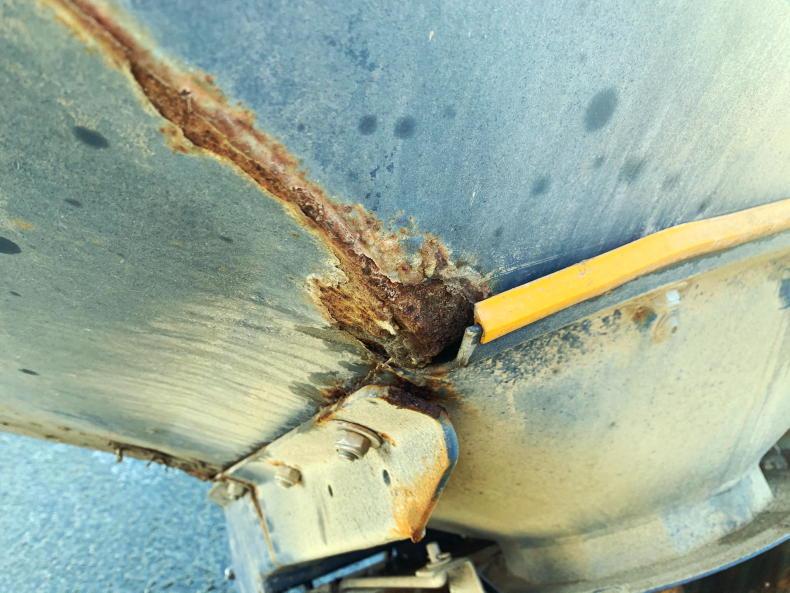
Spreaders with deep non-surface rust to either the hopper or chassis should be avoided.
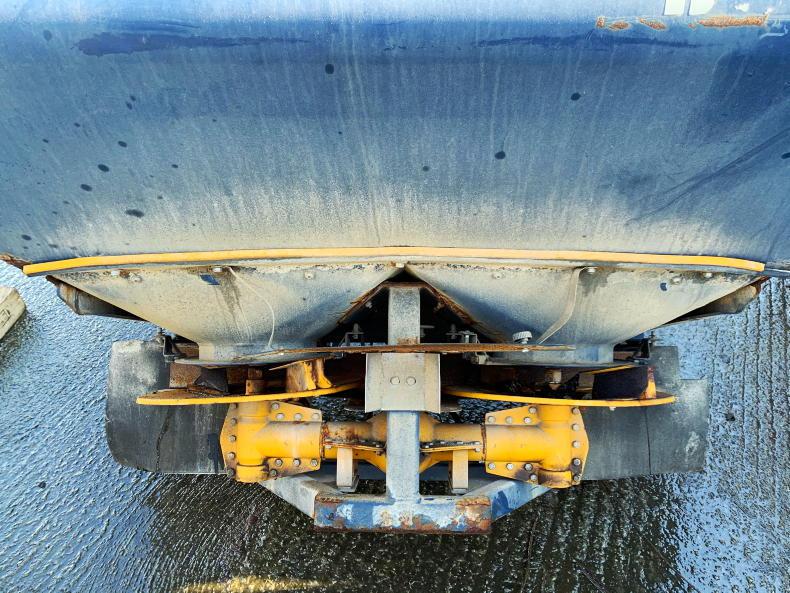
A spreader with a cracked or strained chassis and/or hopper should be avoided.
Areas of minor surface rust are nothing to overly worry about, as the machine has been used after all, but should be taken into account when agreeing a price.
Dry storage isn’t always possible but is key to the proper maintenance and long working life of any machine.
Closely examine the hopper for damage, cracks or strain – a common result of overloading. If the previous owner constantly lowered the spreader down on the ground too quickly while loaded, thus removing the weight from the toplink, it may have caused damage to the joints between the hopper and the frame – examine carefully.
As previously mentioned, the chassis and hopper should show little signs of rusting. Check the smaller nooks and crannies within the chassis where fertiliser buildup may have occurred.
All nuts and bolts should be present and tight – loose bolts will allow movement to occur and possibly wear paintwork leaving it susceptible to the onset of rust. Machines that have been strained, damaged or rusted with structural consequences should be avoided. Otherwise, be prepared for a costly repair bill for refurbishment.
Where possible, it is advised to see the spreader running or ensure it’s being sold with a guarantee that its gearboxes and slip clutch are in good order.
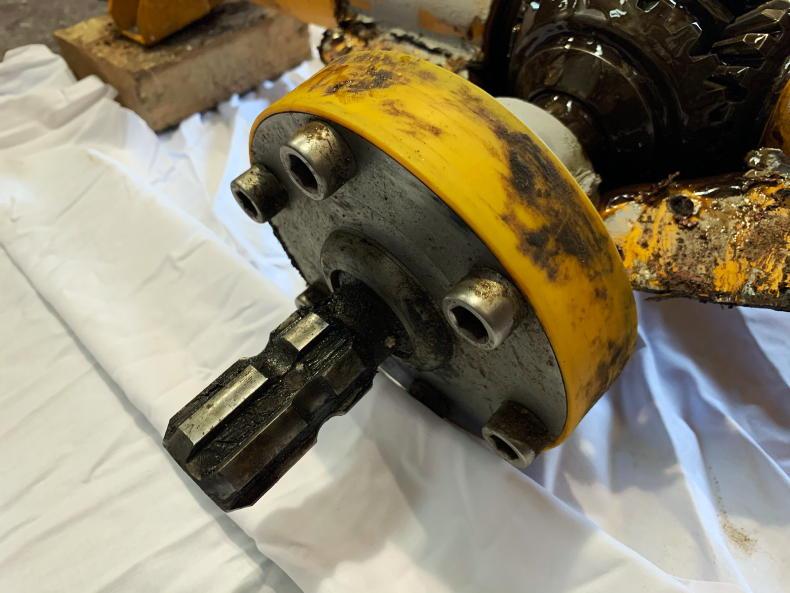
A seized or non-functional slip clutch can be the cause of gearbox issues.
The spreader should be smooth running. A rough running machine can indicate gearbox bearing failure. Check discs for vertical play or rocking. This may indicate that the gearbox bearings need to be replaced. Most manufacturers say that minor play (1mm) will be OK but anything more will need attention. If replacing one bearing, then replace the other for peace of mind.
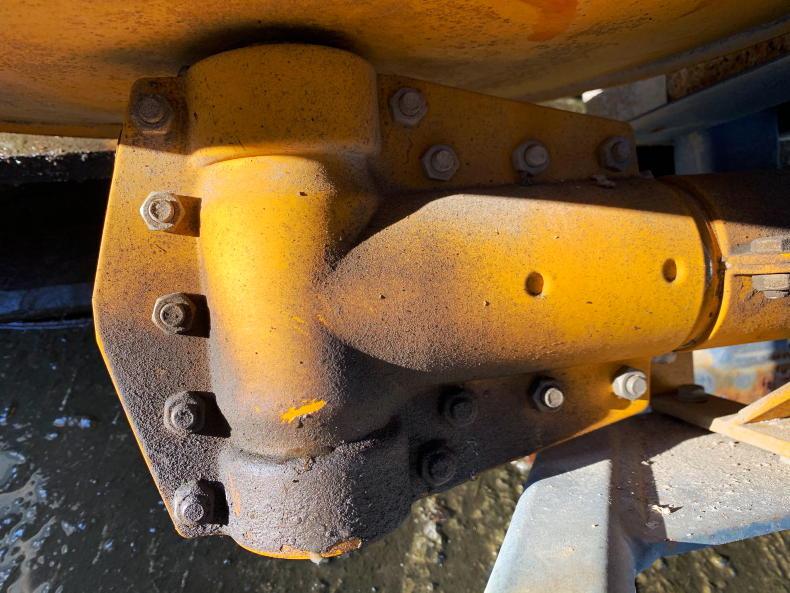
Damp or weeping gearboxes usually indicate oil seal failure.
Examine gearboxes, for oil weeps (oil seal failure) or signs of previous repair which tend to be indicated by non-factory looking gasket sealer, or stripped paint on bolt heads – ask the dealer about previous repairs/maintenance.
With a non-warranted machine and, where possible, it is worth going a step further and examining gearbox oil level and quality. Examine closely for metal filings indicating cog wear, or milky looking oil will indicate seal failure.
A gearbox in need of major repair may be cheaper to replace than refurbished, so account for this in the buying price.
Slip clutches should be functioning. Engaging the PTO on a loaded machine with a seized or non-operational slip clutch will lead to gearbox damage. If the slip clutch shows obvious signs of seizure proceed with caution.
On some machines, evidence of this will be first seen when the gearbox begins sticking in either headland or non-headland mode. So, check that headland mode is engaging and disengaging correctly. If the spreader is fitted with a folddown headland kit, ensure that it is functional.
Although easily replaceable, disc and vane condition should be assessed and reflected in the price. Vanes with a wrinkled effect are worn while vanes with a track worn against the top lip will also need replacing. This track will cause a deviation in the spread pattern, meaning the fertiliser won’t be able to flow off the vane evenly.
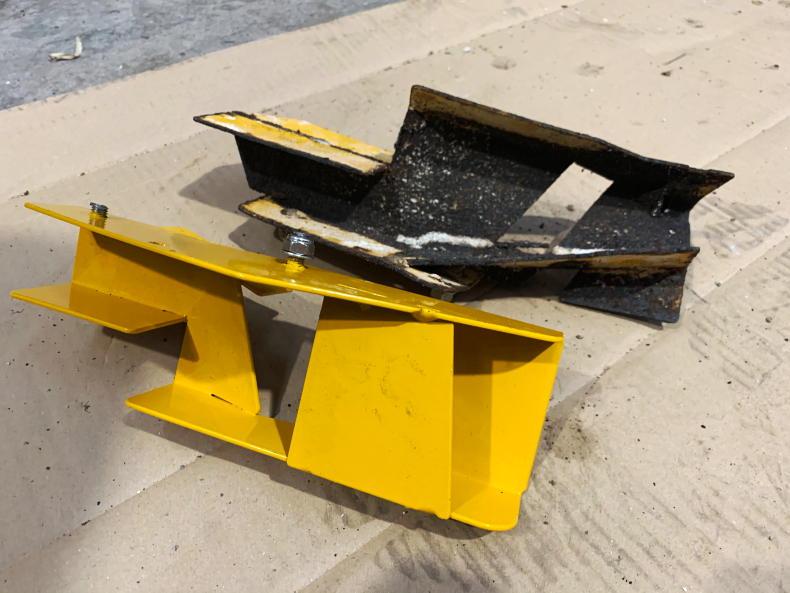
Check vane condition and ensure they are suitable for your intended working width and product type.
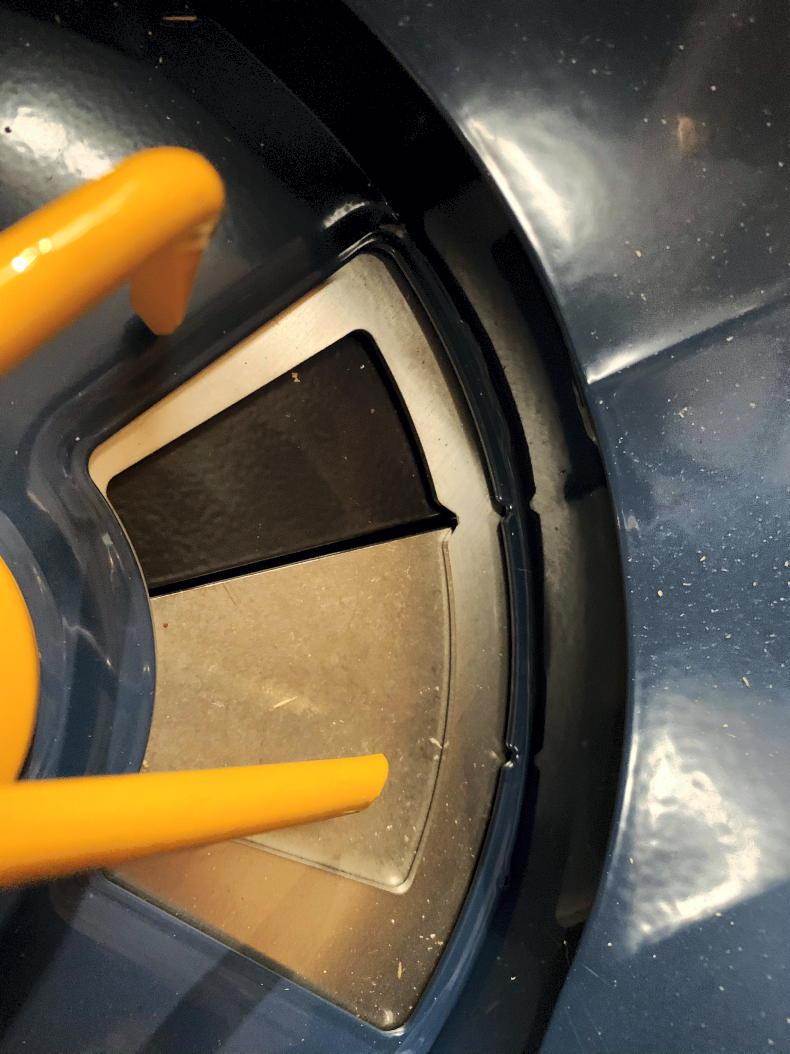
Both shutters should open and close equally.
Ask the question whether or not the vanes are suitable for your intended spreading width and product type. If not, new vanes and/or discs may be needed at an additional cost.
Depending on the make and model, a new set of genuine vanes to fit a typical farmer-specification machine will cost in the region of €400 plus VAT.
In terms of the discs, they won’t wear. However, it is important to assess their condition, and ensure that they are damage-free.
Depending on the manufacturer, some will use single-shutter or twin-shutter designs.
Regardless of the design, each shutter should open and close to an equal width. If not, they can be adjusted on all machines.
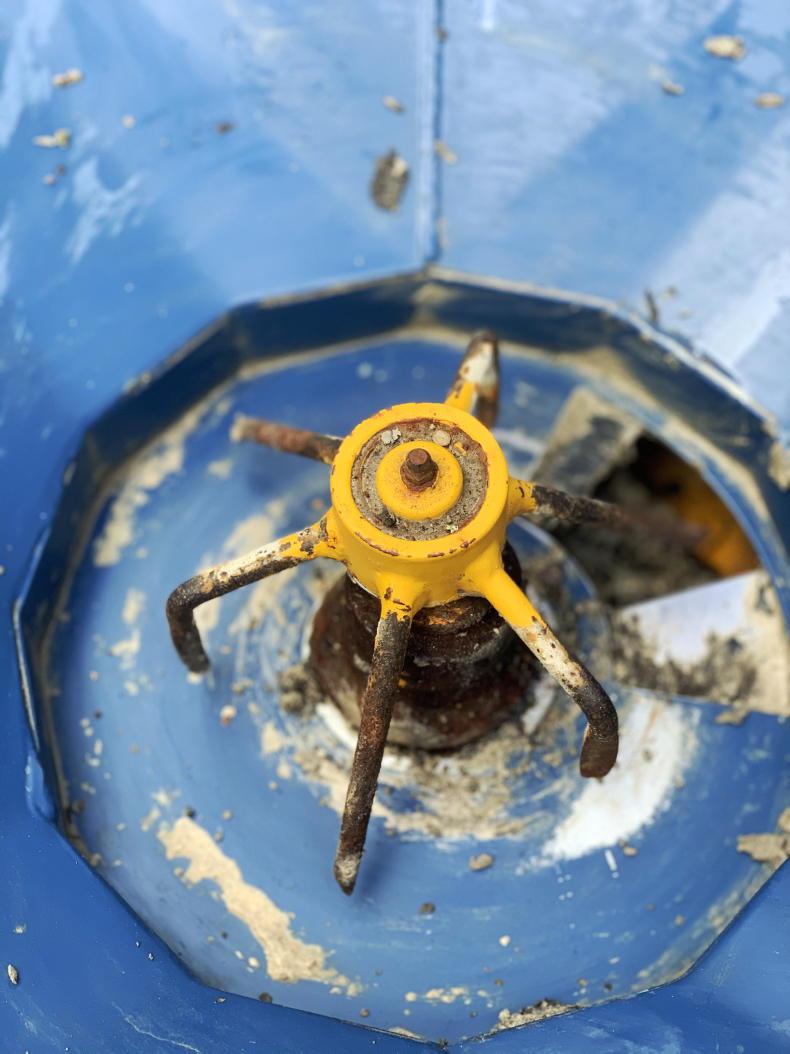
Agitators are important for a consistent, even flow of fertiliser. Check agitators for bearing play.
If the shutters are opened hydraulically, check the ram seal for an oil leak. The springs should also be checked for stretch.
If electrically opened and closed, check the electric actuators for wear and listen for grinding sounds from the motors.
In all cases, shutters should move freely even if they are manually adjusted.
Check the linkage-bars that close them as a bent bar means a stiff or almost seized shutter.
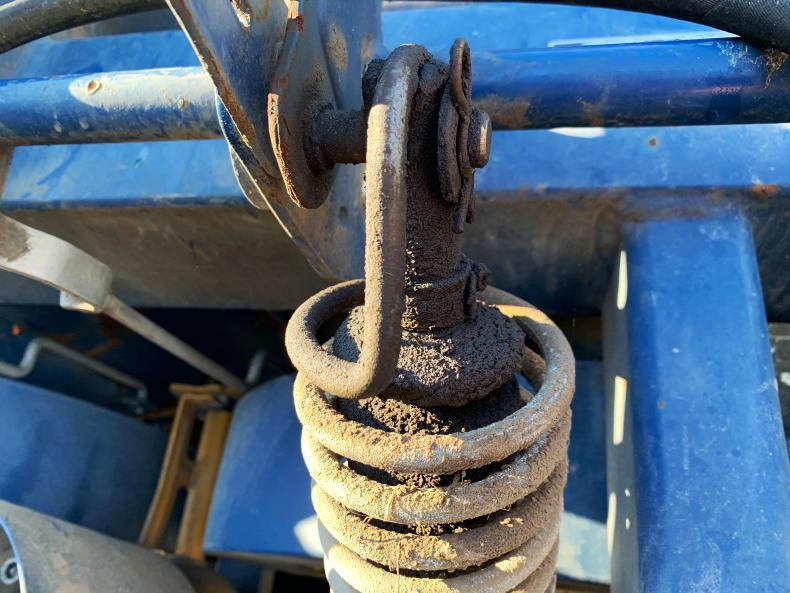
The oil seal on the hydraulic ram controlling the shutters should be checked.
Agitators are important for a consistent even flow of fertiliser. All agitators, horizontal or vertical, will need to be checked for bearing play. If the finger/spiral agitator is being held in using an R-clip, then the same restraint should be used on both sides.
Hopper grills, cover and safety
The majority of twin-disc machines are fitted with grills which serve a number of purposes. This is mainly to prevent foreign objects or lumps of fertiliser making contact with the agitators as well as preventing the operator from making contact with the shutters or agitators.
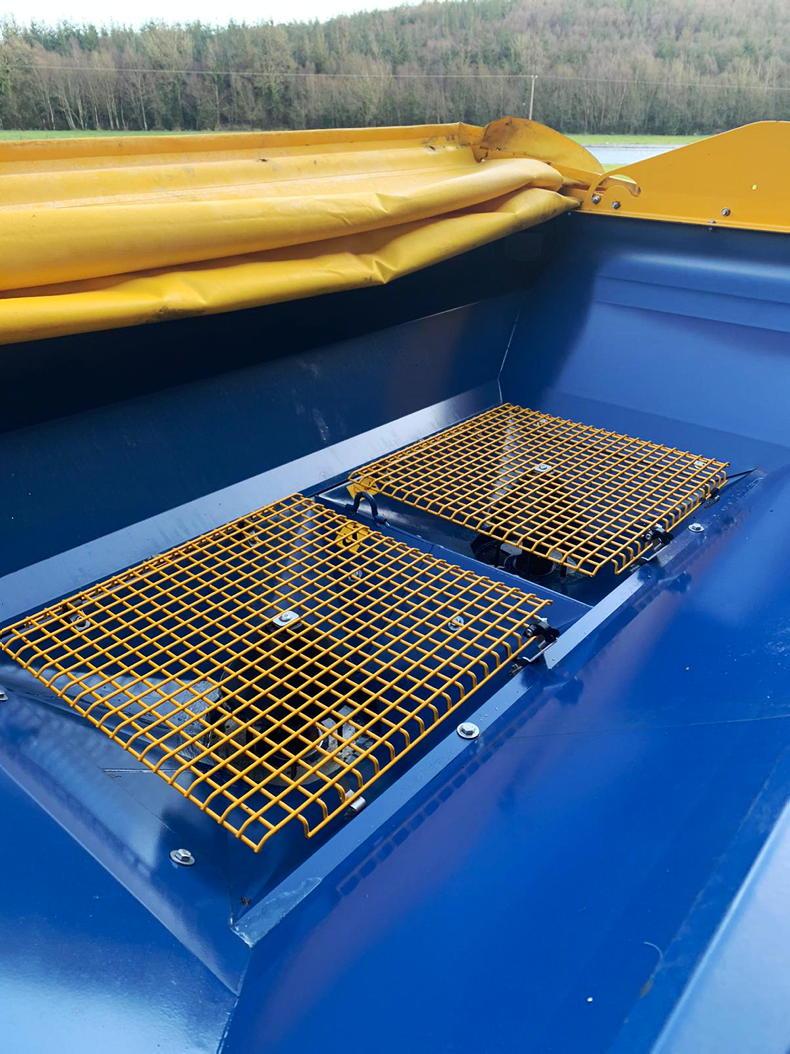
The majority of twin-disc machines are fitted with grills which serve a number of purposes.
Ensure these grills, if fitted, are present and secure in position.
A hopper cover is not essential but a nice feature, if fitted. A good cover will keep both dirt and water out.
Check its hinges and that the canvas has no major rips or tears as a new canvas may prove costly.
As is the case with any PTO-powered machine, it is essential that the PTO cover is present and not damaged.
Check for wear on both universal joints, in particular the joint on the machine side as this is the one often to receive least grease given its tricky location.
Taillights if fitted should be working as the hopper may block the tractors tail lights.
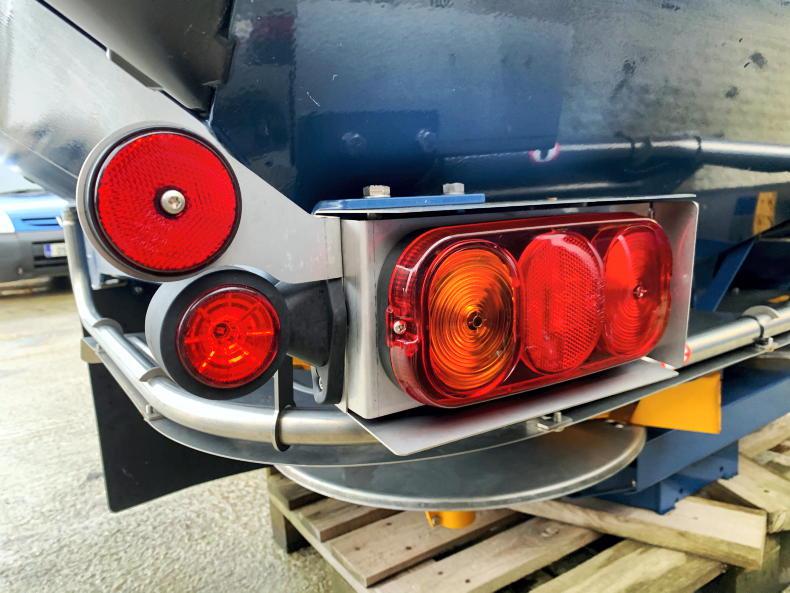
Lights where fitted should be functional.
It’s very important that used machines are purchased with a calibration kit to set up the machine as accurately as possible. Calibration kits can be purchased but at an added cost. So be sure to look for one before a deal is agreed upon.
Most manufacturers use an app to determine machine settings. However, the calibration hardware is still required and recommended.
Electronic control terminals (where fitted) should be fully functional with each setting/function working as intended.
For many livestock farmers, buying a new fertiliser spreader will not be financially viable or necessary for the annual tonnage spread. Instead, the used market can offer good value for money, especially in recent years as a result of the TAMS II grant aid which provided an incentive for farmers to upgrade to a higher specification machine with GPS and section control capabilities.
Naturally, this increased the number of machines on the used market with many tidy genuine spreaders being traded that otherwise would not have been.
The aim of this article is to outline some of the main points to check/consider while scouting for a quality used spreader. If the spreader is being sold by a dealer with warranty, then the chances are that it has been serviced and checked over providing peace of mind. Your own inspection checks will be less critical but still worth carrying out.
With artificial fertiliser being a corrosive product, the nature of the material means that rust will always be a challenge – especially on older machines pre the modern paint processes most manufactures have at their disposal today.
If a spreader is not properly washed down, oiled and dry stored after use, rust will inevitably set in regardless.
Signs that a machine was stored outdoors and exposed to the elements aside from a rusted hopper or chassis is faded paintwork and weathered or dull-looking plastic components.

Spreaders with deep non-surface rust to either the hopper or chassis should be avoided.

A spreader with a cracked or strained chassis and/or hopper should be avoided.
Areas of minor surface rust are nothing to overly worry about, as the machine has been used after all, but should be taken into account when agreeing a price.
Dry storage isn’t always possible but is key to the proper maintenance and long working life of any machine.
Closely examine the hopper for damage, cracks or strain – a common result of overloading. If the previous owner constantly lowered the spreader down on the ground too quickly while loaded, thus removing the weight from the toplink, it may have caused damage to the joints between the hopper and the frame – examine carefully.
As previously mentioned, the chassis and hopper should show little signs of rusting. Check the smaller nooks and crannies within the chassis where fertiliser buildup may have occurred.
All nuts and bolts should be present and tight – loose bolts will allow movement to occur and possibly wear paintwork leaving it susceptible to the onset of rust. Machines that have been strained, damaged or rusted with structural consequences should be avoided. Otherwise, be prepared for a costly repair bill for refurbishment.
Where possible, it is advised to see the spreader running or ensure it’s being sold with a guarantee that its gearboxes and slip clutch are in good order.

A seized or non-functional slip clutch can be the cause of gearbox issues.
The spreader should be smooth running. A rough running machine can indicate gearbox bearing failure. Check discs for vertical play or rocking. This may indicate that the gearbox bearings need to be replaced. Most manufacturers say that minor play (1mm) will be OK but anything more will need attention. If replacing one bearing, then replace the other for peace of mind.

Damp or weeping gearboxes usually indicate oil seal failure.
Examine gearboxes, for oil weeps (oil seal failure) or signs of previous repair which tend to be indicated by non-factory looking gasket sealer, or stripped paint on bolt heads – ask the dealer about previous repairs/maintenance.
With a non-warranted machine and, where possible, it is worth going a step further and examining gearbox oil level and quality. Examine closely for metal filings indicating cog wear, or milky looking oil will indicate seal failure.
A gearbox in need of major repair may be cheaper to replace than refurbished, so account for this in the buying price.
Slip clutches should be functioning. Engaging the PTO on a loaded machine with a seized or non-operational slip clutch will lead to gearbox damage. If the slip clutch shows obvious signs of seizure proceed with caution.
On some machines, evidence of this will be first seen when the gearbox begins sticking in either headland or non-headland mode. So, check that headland mode is engaging and disengaging correctly. If the spreader is fitted with a folddown headland kit, ensure that it is functional.
Although easily replaceable, disc and vane condition should be assessed and reflected in the price. Vanes with a wrinkled effect are worn while vanes with a track worn against the top lip will also need replacing. This track will cause a deviation in the spread pattern, meaning the fertiliser won’t be able to flow off the vane evenly.

Check vane condition and ensure they are suitable for your intended working width and product type.

Both shutters should open and close equally.
Ask the question whether or not the vanes are suitable for your intended spreading width and product type. If not, new vanes and/or discs may be needed at an additional cost.
Depending on the make and model, a new set of genuine vanes to fit a typical farmer-specification machine will cost in the region of €400 plus VAT.
In terms of the discs, they won’t wear. However, it is important to assess their condition, and ensure that they are damage-free.
Depending on the manufacturer, some will use single-shutter or twin-shutter designs.
Regardless of the design, each shutter should open and close to an equal width. If not, they can be adjusted on all machines.

Agitators are important for a consistent, even flow of fertiliser. Check agitators for bearing play.
If the shutters are opened hydraulically, check the ram seal for an oil leak. The springs should also be checked for stretch.
If electrically opened and closed, check the electric actuators for wear and listen for grinding sounds from the motors.
In all cases, shutters should move freely even if they are manually adjusted.
Check the linkage-bars that close them as a bent bar means a stiff or almost seized shutter.

The oil seal on the hydraulic ram controlling the shutters should be checked.
Agitators are important for a consistent even flow of fertiliser. All agitators, horizontal or vertical, will need to be checked for bearing play. If the finger/spiral agitator is being held in using an R-clip, then the same restraint should be used on both sides.
Hopper grills, cover and safety
The majority of twin-disc machines are fitted with grills which serve a number of purposes. This is mainly to prevent foreign objects or lumps of fertiliser making contact with the agitators as well as preventing the operator from making contact with the shutters or agitators.

The majority of twin-disc machines are fitted with grills which serve a number of purposes.
Ensure these grills, if fitted, are present and secure in position.
A hopper cover is not essential but a nice feature, if fitted. A good cover will keep both dirt and water out.
Check its hinges and that the canvas has no major rips or tears as a new canvas may prove costly.
As is the case with any PTO-powered machine, it is essential that the PTO cover is present and not damaged.
Check for wear on both universal joints, in particular the joint on the machine side as this is the one often to receive least grease given its tricky location.
Taillights if fitted should be working as the hopper may block the tractors tail lights.

Lights where fitted should be functional.
It’s very important that used machines are purchased with a calibration kit to set up the machine as accurately as possible. Calibration kits can be purchased but at an added cost. So be sure to look for one before a deal is agreed upon.
Most manufacturers use an app to determine machine settings. However, the calibration hardware is still required and recommended.
Electronic control terminals (where fitted) should be fully functional with each setting/function working as intended.
















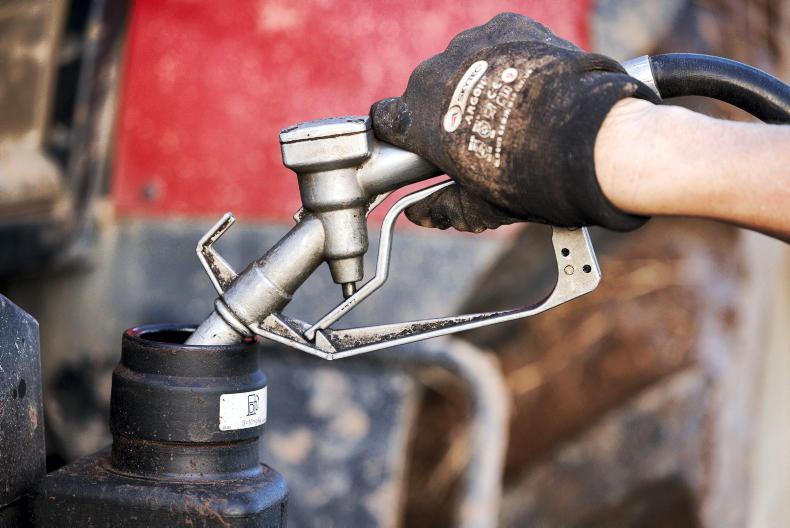


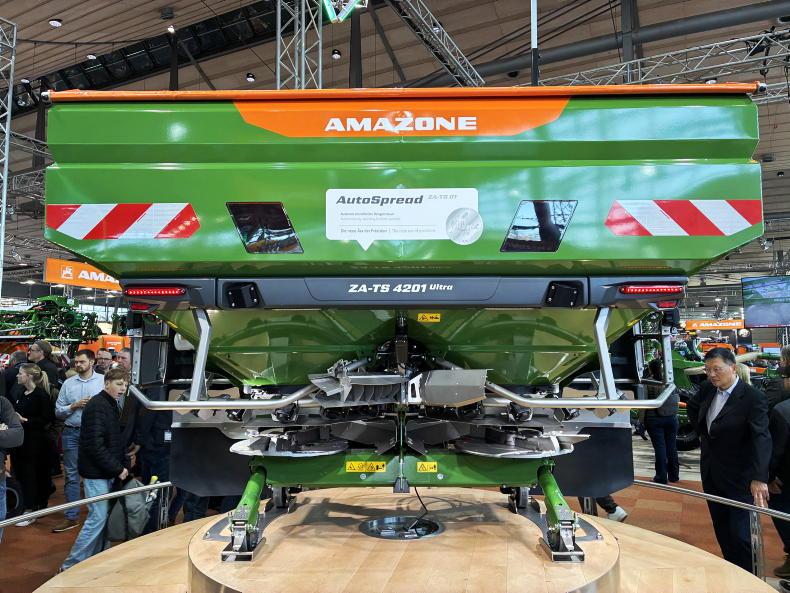
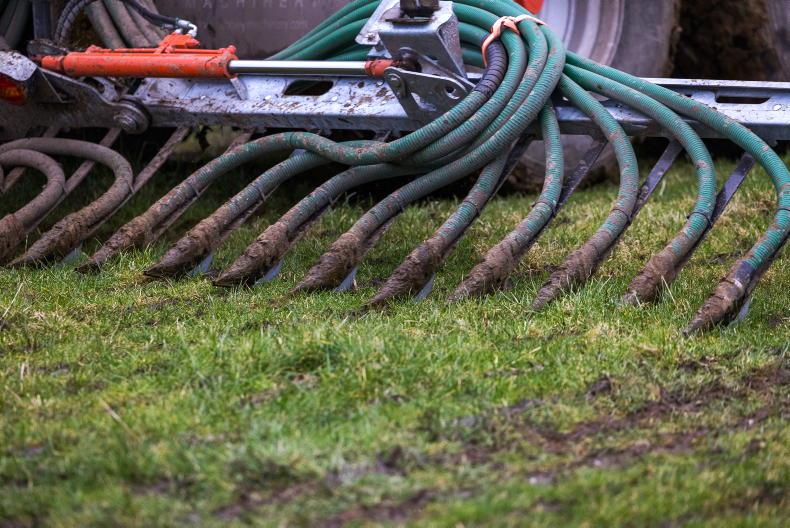
SHARING OPTIONS